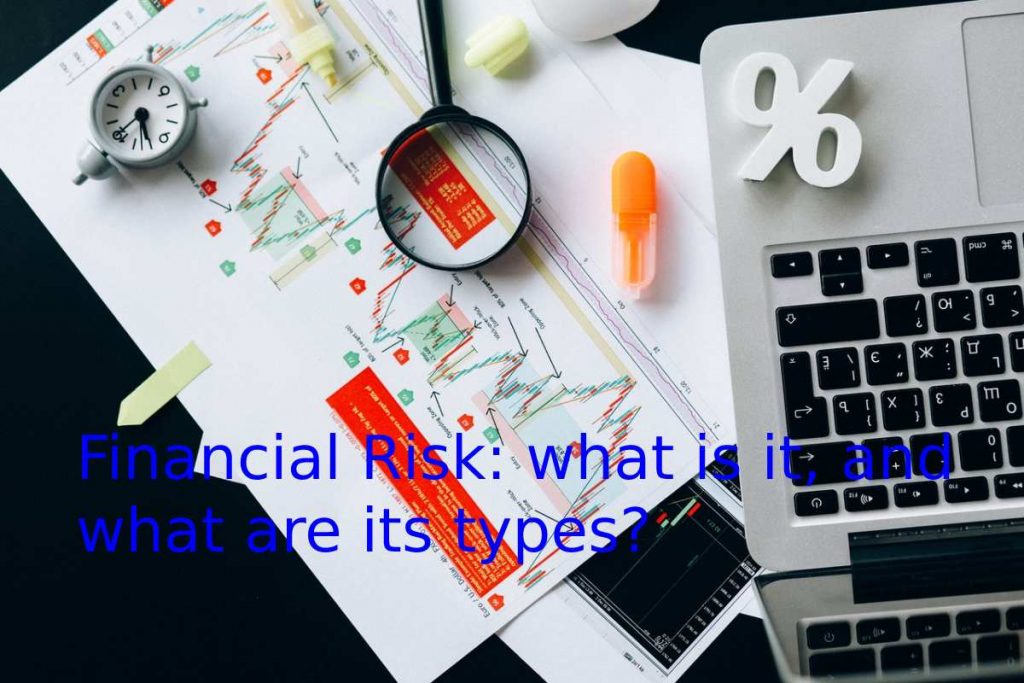Table of Contents
What is Financial Risk?
In the activity of a company – from an SME to a large company – factors of a very diverse nature play a decisive role: economic, legal, labour, human, bureaucratic, ecological, and a long etcetera. All of these conditions the day and, in the event of negative evolution, can pose risks to the viability of the business.
But let’s take into account that the main objective of practically all companies is to obtain the most significant possible number of profits. It is economic resources that generally support the rest of the areas mentioned. There is a factor that is especially important for the business: risk. Financial.
Financial risk could be defined as the probability that a company has that an event or mishap will occur with negative consequences on the performance of its investments and, therefore, for the organization as a whole. In other words, financial risk refers to the insecurity and uncertainty caused by the changes produced in the sector in which it operates, the volatility of the financial markets, or the impossibility of returning the capital by one of the parties, among others—many factors.
Financial Risk
Financial risks -also known as credit or insolvency risks- are closely related to economic risks. The more income a business has, the better it can cope with adverse financial circumstances. The assets owned by a company and the products and services it offers will determine the evolution of its debt and how to face a threat.
Likewise, it is helpful to talk about financial products to understand better what financial risk is or how it can be produced. What instruments can a natural or legal person acquire to boost their savings or investments? It is common for companies to have these financial products that are also likely to cause financial risks, although they usually provide benefits.
Types of Financial Risk
There are different types of financial risks that a company can encounter. Knowing them, analyzing them, and dealing with them is essential.
Credit Risk
It is one of the most common in terms of its financial assets. It occurs when one of the parties to a financial contract does not make the payments on time and in the manner stipulated in the contract. Due to late payment or direct non-payment, the company may suffer interest losses, decreased cash flow, and expenses for the recovery process, among other problems.
Liquidity Risk
Another of the most common financial risks occurs when one of the contractual parties has assets and is willing to trade with them but does not have sufficient liquidity with which to assume its obligations. In this way, the sale cannot be made or, at least, not quickly enough and at the right price. In this case, we speak of a situation of illiquidity.
An example would be a company in a phase of continuous portfolio losses, to the point of not being able to pay its workers.
Market Risk
This is the risk associated with movements in the financial markets. Within it, we can distinguish three other types of risk, depending on market conditions:
Market Risk
It is one of the most common related risks caused by changes in the value of financial instruments, such as bonds, shares, etc. That is the possibility of suffering losses in a portfolio due to factors or operations on which said portfolio depends.
Foreign Exchange, Exchange Rate, or Currency Risk
It link to the fluctuation of exchange rates currencies, especially for companies that must operate in different currencies. These companies usually take insurance to avoid such market fluctuations and associated risks.
interest Rate Risks
They derive from the increases and decreases in interest rates at a specific time. For example, if the company has a mortgage and increases the Euribor. Also, in this case, companies can take out interest rate hedges and financial products that allow them to reduce the impact of changes in interest rates.
political Risks
It occurs due to the lack of political stability of a country or region, which affects the company’s economic interests. From this point of view, every territory or place in the world presents a different level of political risk.
Inflation Risk
It link to the uncertainty of the evolution of inflation on the real rate of return of an investment. In other words, the risk for the investor is given by the variation in the purchasing power of the cash flows, resulting from the difference expect inflation and the actual inflation.
legal Risk
This uncertainty causes any possible weight change in a specific territory or country’s legislation, which can drive from loss of confidence to economic losses. Although the company cannot intervene directly in these legislative changes, it must consider them to mitigate their possible negative consequences.
In short, financial risks are part of the daily management of a company, and, therefore, knowing how to manage them is something that every business must prepare for.
Examples of Financial Risk
The most common risks among SMEs are liquidity, interest, and credit risks.
In the first case, the risk occurs when, for example. A company has requested a loan but does not have enough liquid money to pay off the debt. Even though it has assets (premises, cars, etc.) that, if sold, They could cover it. It is a more common risk in the hospitality and transport sectors due to the primary need for demand.
In the case of interest rate risk. We can also use the example of a company with a loan or mortgage granted. If interest rates rise, you will have to pay a higher price for this money. Unlike, on the other hand. Those who have investments in deposits. and other fixed-income elements, such as public debt and the like.
And lastly, regarding credit risk. And there have been cases in which the countries themselves have generated, Going into default: Venezuela in 2017. Greece in 2010, and Argentina in 2001.
